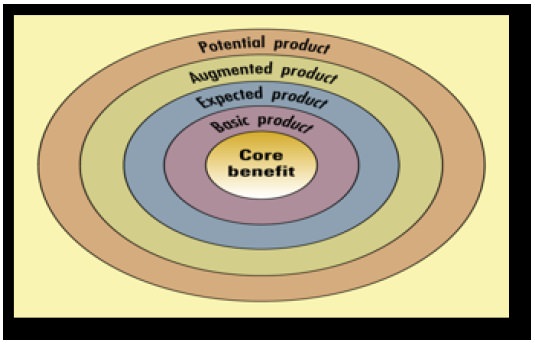MARKETING MANAGEMENT - Concept Of A Product
From Generic To Potential Product - Concept Of A Product
Posted On :
At the time of product planning, the marketer has to think about FIVE types of benefits.
From Generic To Potential Product
Most of you would be aware that a product has a personality of several components-like the physical products, the brand name, the package, the label etc. all of us know that most of the products are undergoing a constant change and the marketing man has been constantly engaged in enriching his product offer. In his attempt to score over competition, he has been bringing about refinement on his basic product offer, but managing the product was becoming more and more difficult. Hence the product traveled various levels:
The Core Product
The Generic product
The branded Product
The Differentiated product
The customised product
The augmented product
The potential product
Most of you would be aware that a product has a personality of several components-like the physical products, the brand name, the package, the label etc. all of us know that most of the products are undergoing a constant change and the marketing man has been constantly engaged in enriching his product offer. In his attempt to score over competition, he has been bringing about refinement on his basic product offer, but managing the product was becoming more and more difficult. Hence the product traveled various levels:

The Core Product
The Generic product
The branded Product
The Differentiated product
The customised product
The augmented product
The potential product
The Core benefits:
What does the product mean to the customer? For example, a bread
offers core benefit of reducing hunger.
The Generic product
The generic product is the unbranded and undifferentiated commodity. Examples are: like rice, bread, flour or cloth.
The Branded Product
The branded product gets an identity through a ’name’.
Modern bread, Harvest are branded products.
Modern bread, Harvest are branded products.
The differentiated product
The differentiated product
enjoys a distinction from other
similar products/brands in the market. The differential claimed may be ‘real’,
with a real distinction on ingredient, quality, utility, or service, or it may
be ‘psychological’ brought about through subtle sales appeals.
Close-up tooth paste offers freshness and bold intimate social interactions among youth, whereas its rival Colgate offers prevention of tooth decay with freshness..
Close-up tooth paste offers freshness and bold intimate social interactions among youth, whereas its rival Colgate offers prevention of tooth decay with freshness..
The customized product
Customer specific requirements
are taken into account while
developing the product. Commonly practiced in the industrial product marketing,
where the manufacturer and the user are in direct contact and the product gets
customized to the requirements of the customer.
A ready made garment represents customization for a group of people; when you buy one, you ask for alterations to suit your shape and size. On the other hand, if you give cloth to the tailor for stitching, the garment is customized to you.
The augmented product is the result of voluntary improvements brought about by the manufacturer in order to enhance the value of the product, which are neither suggested by the customer nor expected by them. The marketer on his own augments the product, by adding an extra facility or an extra feature to the product.
A ready made garment represents customization for a group of people; when you buy one, you ask for alterations to suit your shape and size. On the other hand, if you give cloth to the tailor for stitching, the garment is customized to you.
The augmented product
The augmented product is the result of voluntary improvements brought about by the manufacturer in order to enhance the value of the product, which are neither suggested by the customer nor expected by them. The marketer on his own augments the product, by adding an extra facility or an extra feature to the product.
Refrigerators are augmented with extra shelves, more shelf space, and
double doors.
The potential product is tomorrow’s product carrying with it all the improvements and finesse possible under the given technological, economic and competitive condition. There are no limits to the ‘potential product’. Only the technological and economic resources of the firm set the limit.
Robot-managed houses, artificial hearts, flying cars, space travel jets, etc., represent potential products.
The potential product
The potential product is tomorrow’s product carrying with it all the improvements and finesse possible under the given technological, economic and competitive condition. There are no limits to the ‘potential product’. Only the technological and economic resources of the firm set the limit.
Robot-managed houses, artificial hearts, flying cars, space travel jets, etc., represent potential products.
Tags : MARKETING MANAGEMENT - Concept Of A Product
Last 30 days 668 views












